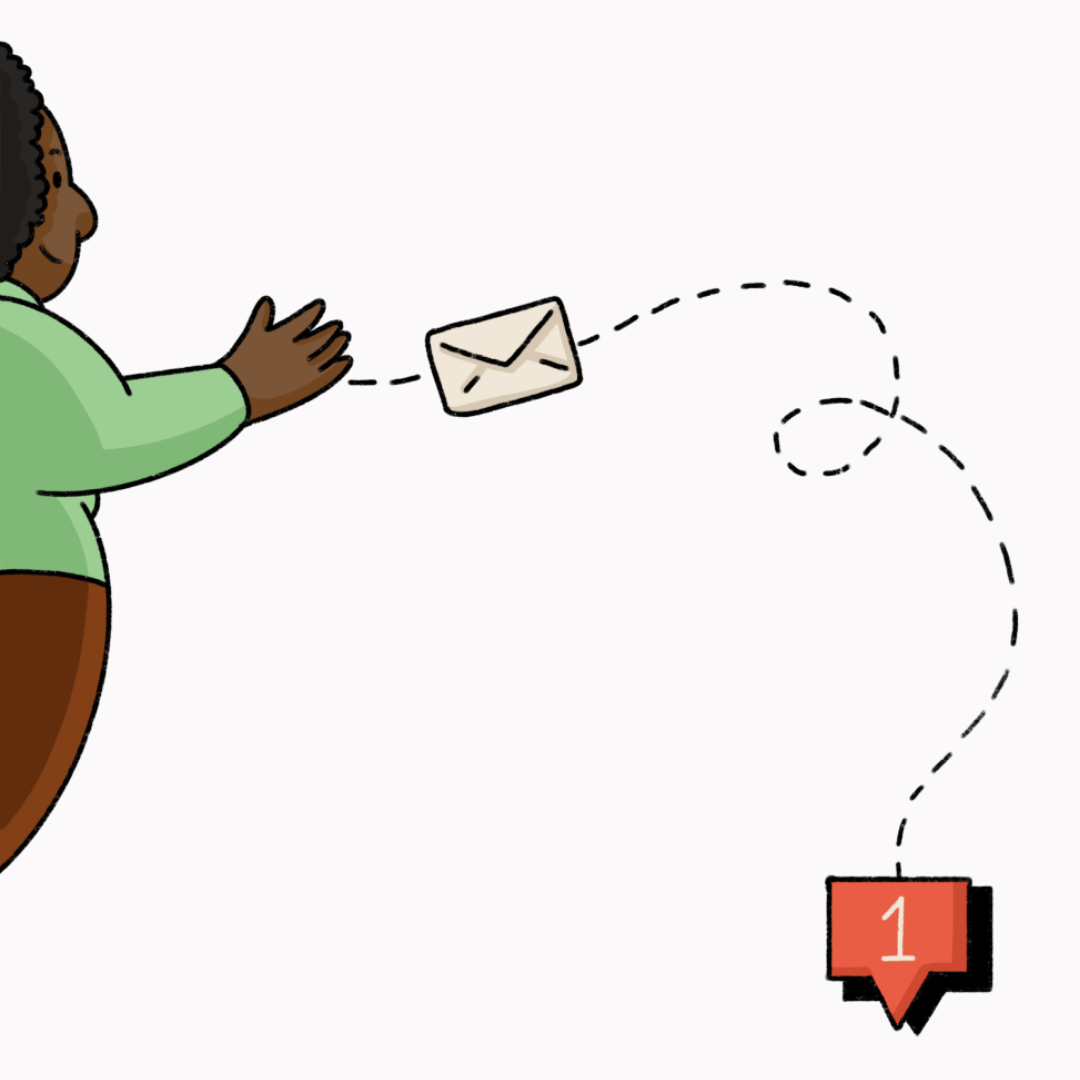Written By: Chloé Pronovost-Morgan (she/her).
Edited By: Camille Zeitouni (she/her).
In August 2017, my friend Julia told me about an uncomfortable situation that she experienced on her plane ride from Paris (her home) back to Montreal: she got her period and didn’t have the products essential to deal with it. Though her father was sitting by her side, Julia felt too shy to tell him. Doing what most menstruators would have done (per societal norms), she made do with toilet paper, stayed discrete and swore to herself that she would always have a tampon in her bag from then on.
However mundane, it got her thinking “what happens to people who cannot afford the products I told myself I’d always have; to the people who face discomfort not for a few hours, but for days, every single month?” Then, “why was I so ashamed to tell my Dad?”.
She came back to Montreal with the determination to volunteer for a cause that addressed this issue.
Together, we searched and found that no such cause existed. Convinced that access to adequate period products should be a right and not a privilege, and we set out to do something about it.
We founded the non-profit organization Monthly Dignity. What started as ‘distributing menstrual hygiene products to homeless women1’ evolved into ‘tackling period poverty’. Though we can now name the issue and work tirelessly to mitigate its effects, its scope is much wider than we ever could have imagined. Tackling period poverty requires broad societal involvement and systemic action. As a medical student, I’ve realized that healthcare professionals have an important role to play.
Period poverty refers to the financial, social, cultural and political barriers to accessing adequate menstrual products and education (1). These material or immaterial impediments to menstrual health result in an inability to manage periods safely and with a sense of dignity. They also go against the UN’s 2010 declaration of hygiene as a basic human right (2).
A third of Canadian cis women under the age of 25 have struggled to afford menstrual products (3). But, periods don’t stop for a lack of budget. Menstruators living in precarious situations have to deal with their cycle in ways that jeopardize both their physical and mental health. These involve sacrificing something within budget to purchase a box of pads or tampons, rationing period products, or using insalubrious makeshift alternatives (rags, paper towels, old t-shirts or socks) (4). Using a tampon for too long poses a risk for Toxic Shock Syndrome, while unhygienic alternatives or re-used pads can lead to urogenital infections, vaginal itching and skin irritations (5, 6). Further, the emotional toll and shame that accompanies this reoccurring experience is linked to higher levels of anxiety and depression in menstruators (7).
Inadequate education and a lack of bodily awareness are equally a barrier to menstrual health: they shroud the experience of menstruation in mystery and shame. This poses a particular threat to young menstruators, who still rely on caregivers to access products, but may feel too shy to self-advocate and verbalize their needs. At a societal level, the informational vacuum surrounding periods perpetuates the stigma associated with this biological phenomenon.
Menstrual shame and stigma, together with a lack of access to products, limits menstruators in their educational, professional and social opportunities. According to Plan International’s 2018 data, “68% of Canadian women felt that their period prevented them from full participation in an activity, and more than half have missed school, work or declined social activities because of their period” (8).
Evidently, period poverty presents a significant barrier to gender equity.
Despite its devastating consequences, period poverty remains a hidden issue. In fact, the importance of menstrual health has been historically neglected in healthcare settings (1). For example, doctors rarely hear about period poverty as a concept, though they frequently treat patients who experience it (9). This paradox can be attributed to the androcentrism that dominates health science – defined as having men as “the reference, the norm and the example for all humans” (1). It results in the invisibilisation of all other bodies and identities, in health science, policy and practice (1, 10).
In order to tackle period poverty in the healthcare setting, menstrual health needs to be understood as a tool for health promotion (1, 11, 12). Menstrual health is contingent on access to adequate menstrual products, clean and safe washing facilities and accurate information through effective education (12).
The Scottish Parliament made history by passing the first legislation to make period products free and accessible to all those who need them (13). I believe our Canadian government should follow suit. Period poverty would be drastically reduced if menstrual products were available in public spaces. In the meantime, healthcare professionals can advocate for this to be the case in their work environment, for the sake of both patients and staff.
Healthcare professionals should be aware that some menstruators, unprompted, may not disclose menstrual symptoms – either from shame or a belief that symptoms such as pain are ‘normal’. As such, they can assist by taking a thorough history that includes menstrual health experiences and ensuring that they are familiar with menstrual disorders (12).
In addition, body awareness and knowledge about the menstrual cycle are key tools for health promotion in the menstruating population (1). It is essential that healthcare professionals start having open conversations about periods with their patients starting young – before menarche (14). They can then open up a space to young menstruators’ conceptions and experiences of periods, taking the opportunity to destigmatize and demystify the menstrual cycle. Imparting that the menstrual cycle is a natural process that is linked with good health will be protective against the shame and discrimination that menstruators are particularly vulnerable to in teenage years (8). Further, it will help empower them to experience periods from a place of confidence, going a long way in countering absenteeism.
Having open and recurrent conversation on menstruation with patients is crucial. It grants healthcare professionals the opportunity to impart knowledge, normalize periods, and ultimately, empower menstruators through menstrual health and dignity.
Tackling period poverty requires a palliative and discursive approach. Healthcare professionals can and should take part in both.
1 Note: we now use the word “menstruators” to reflect the fact that people across the gender spectrum experience periods and/or PMS – not every person who has a period is a cis woman, not every cis woman has a period. We also started using the word “houseless” rather than “homeless”, for one can have a home without having housing.
References:
1. Medina-Perucha L, Jacques-Avino C, Valls-Llobet C, Turbau-Valls R, Pinzon D, Hernandez L, et al. Menstrual Health and Period Poverty among Young People Who Menstruate in the Barcelona Metropolitan Area (Spain): Protocol of a Mixed-Methods study. BMJ Open. 2020;10(7):e035914.
2. The Human Right to Water and Sanitation [Internet]. United Nations. Cited 2021 Jan 15]. Available from: https://documents-dds-ny.un.org/doc/UNDOC/GEN/N09/479/35/PDF/N0947935.pdf?OpenElement
3. Plan Int’l Canada Releases New Menstrual Hygiene Research [Internet]. Plan Canada. 2019 [cited 2021 Jan 17]. Available from: https://plancanada.ca/media-centre/plan-intl-canada-releases-new-menstrual-hygiene-research
4. Nearly One Quarter of Canadian Women Have Experienced Inadequate Access to Period Products, Causing Devastating Effects on their Health [Internet]. Bloomberg business. 5 August 2020 [Cited 17 January 2021]. Available from: https://www.bloomberg.com/press-releases/2020-08-05/nearly-one-quarter-of-canadian-women-have-experienced-inadequate-access-to-period-products-causing-devastating-effects-on-thei
5. Das P, Baker KK, Dutta A, Swain T, Sahoo S, Das BS, et al. Menstrual Hygiene Practices, WASH Access and the Risk of Urogenital Infection in Women from Odisha, India. PLoS ONE. 2015; 10(6): e0130777.
6. Hennegan J, Dolan C, Wu M, Scott L, Montgomery P. Measuring the Prevalence and Impact of Poor Menstrual Hygiene Management: a Quantitative Survey of Schoolgirls in Rural Uganda. BMJ Open. 2016; 6(12):e012596.
7. Caruso BA, Cooper HLF, Haardörfer R, et al. The Association Between Women’s Sanitation Experiences and Mental Health: A Cross-Sectional Study in Rural, Odisha India. SSM – Popul Health. 2018; 5:257-266.
8. A Canadian Gender Study [Internet]. Plancanada.ca. 2018 [cited 17 January 2021]. Available from: https://plancanada.ca/file/Plan-International-Canada–period-stigma-2018-report.pdf
9. Rimmer A. Period Poverty: Five Minutes with Eleanor Wilson. BMJ. 2018; 362:k2913.
10. Levinson R. Sexism in Medicine. Am J Nurs. 1976; 76(3):426-31.
11. The Ottawa Charter for Health Promotion [Internet]. WHO. [Cited 15 January 2021] Available from: https://www.who.int/teams/health-promotion/enhanced-wellbeing/first-global-conference
12. Matteson KA, Zaluski KM. Menstrual Health as a Part of Preventive Health Care. Obstet Gynecol Clin North Am. 2019; 46(3):441-53.
13. Period Products (Free Provision) (Scotland) [Internet]. Scottish Parliament; 24 Nov 2020 [Cited 15 January 2021]. Available from: https://beta.parliament.scot/-/media/files/legislation/bills/current-bills/period-products-free-provision-scotland-bill/stage-3/bill-as-passed-period-products-free-provision-scotland-bill.pdf
14. American College of Obstetricians & Gynecologists Committee on Adolescent Health Care. ACOG Committee Opinion No. 651: Menstruation in Girls and Adolescents: Using the Menstrual Cycle as a Vital Sign. Obstet Gynecol 2015; 126:e143–6.



